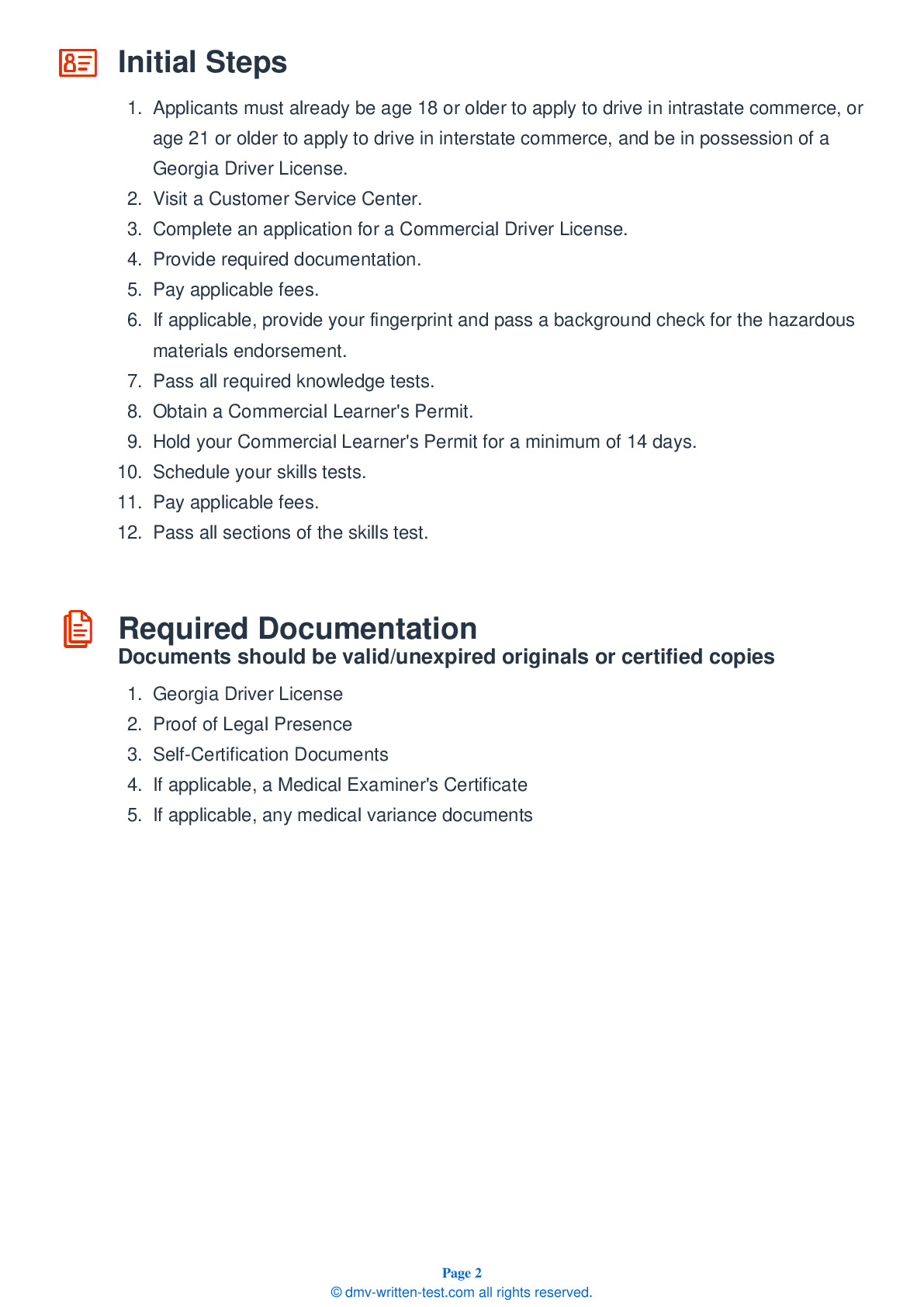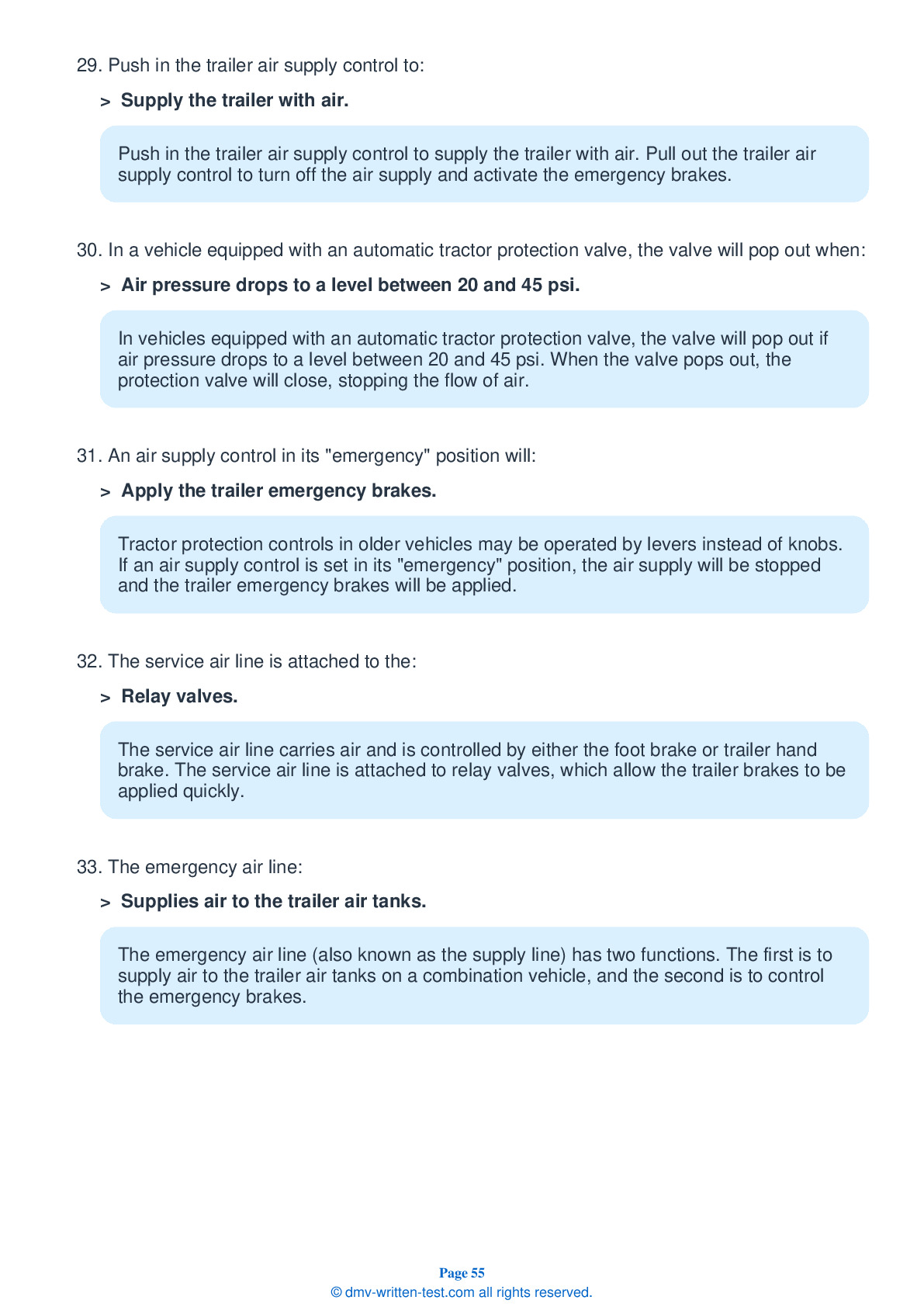Combination
All applicants who are applying for a Class A CDL should be prepared to take the Combination test. This test covers information found in Section 6 of the Commercial Driver License Manual. Section 6 provides the information needed to safely operate tractor-trailers, doubles, triples, and straight trucks with trailers. The test is made up of 20 multiple-choice questions, and applicants will need to correctly answer a minimum of 16 questions to pass. The Combination test is not a replacement for the Double/Triple endorsement test.
Number of Question
Passing Score
1. When connecting a converter dolly to a second or third trailer, the trailer height should be:
Explanation
When connecting a converter dolly to a second or third trailer, the trailer height should be correct. It should be slightly lower than the center of the fifth wheel.
2. Before a drive, ensure that air flows to all trailers by:
Explanation
Before a trip, ensure that air in the air brake system reaches all trailers. Do this by waiting for air pressure to build, then sending air to both the emergency and service lines and opening the shut-off valves on the rear of the last trailer. If air escapes from the shut-off valves in the rear of the combination, the air is being supplied to the entire vehicle.
3. What is another name for the service line?
Explanation
The service line, also called the control line or signal line, carries air to the trailer brakes and is controlled by the foot brake or trailer hand brake.
4. An Anti-Lock Braking System (ABS):
Explanation
The function of an Anti-Lock Braking System (ABS) is to prevent a vehicle's wheels from locking up during hard braking.
5. Having ABS on only one axle:
Explanation
Having an Anti-Lock Braking System (ABS) on only the trailer, or even on just one axle, will still provide a driver with additional control over the trailer when braking.
6. The trailer hand valve:
Explanation
The trailer hand valve should not be used for parking. This could cause all of the air to leak out of the braking system, resulting in the brakes releasing. Instead, use the parking brake.
7. Rollovers happen when:
Explanation




